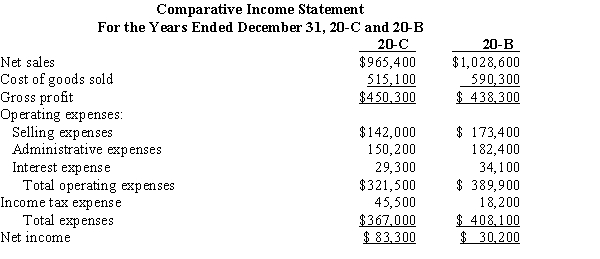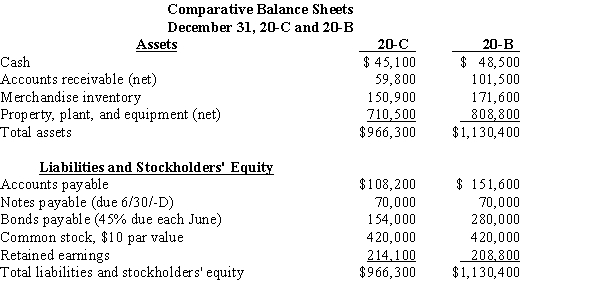Use the following comparative income statements and balance sheets to complete the required ratio analysis. 
 Additional information:
Additional information:
All sales are made on account. Balances of selected accounts for December 31, 20-A are accounts receivable (net), $73,800; merchandise inventory, $153,100; total assets, $906,900; common stockholders' equity, $527,200; and common shares outstanding, 42,000.  Required:
Required:
Prepare a liquidity analysis by calculating for 20-B and 20-C the (a) current ratio, (b) quick ratio, (c) accounts receivable turnover, and (d) merchandise inventory turnover. Indicate whether there has been an improvement or not from 20-B to 20-C. Round all answers to two decimal places. 
Definitions:
Nonunion Grievance Systems
Procedures implemented by workplaces without union representation, allowing employees to raise and resolve issues regarding workplace conditions or management decisions.
Grievance Arbitration
A process where a neutral third party makes a binding decision regarding a dispute between an employee and employer over the application or interpretation of a labor agreement.
Judicial Process
The series of steps and procedures followed in the legal system, including litigation and adjudication in courts.
Bilateral Negotiations
A negotiation process involving two parties directly interacting to reach an agreement or resolve disputes, without involving intermediaries.
Q21: In a perpetual inventory system, costs of
Q23: To find the rate in increase or
Q27: Kristin Anastra and Jesse Turnbull agreed on
Q29: The single discount equivalent rate of the
Q32: The_is the total or original amount.<br>A) rate<br>B)
Q49: Willa's Florist receives an invoice for $2,865.00,
Q51: Which of the following adjustments would NOT
Q60: The ledger in which details of the
Q74: The mean is the arithmetic average of
Q86: The range is the difference between the